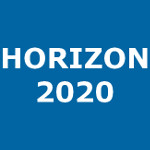Generation of Self-Induced Myocardial Ischemia in Large-Sized Cardiac Spheroids without Alteration of Environmental Conditions Recreates Fibrotic Remodeling and Tissue Stiffening Revealed by Constriction Assays
Paz-Artigas, Laura (Universidad de Zaragoza) ; González-Lana, Sandra ; Polo, Nicolás ; Vicente, Pedro ; Montero-Calle, Pilar ; Martínez, Miguel A. (Universidad de Zaragoza) ; Rábago, Gregorio ; Serra, Margarida ; Prósper, Felipe ; Mazo, Manuel M. ; González, Arantxa ; Ochoa, Ignacio (Universidad de Zaragoza) ; Ciriza, Jesús (Universidad de Zaragoza)
Resumen: A combination of human-induced pluripotent stem cells (hiPSCs) and 3D microtissue culture techniques allows the generation of models that recapitulate the cardiac microenvironment for preclinical research of new treatments. In particular, spheroids represent the simplest approach to culture cells in 3D and generate gradients of cellular access to the media, mimicking the effects of an ischemic event. However, previous models required incubation under low oxygen conditions or deprived nutrient media to recreate ischemia. Here, we describe the generation of large spheroids (i.e., larger than 500 μm diameter) that self-induce an ischemic core. Spheroids were generated by coculture of cardiomyocytes derived from hiPSCs (hiPSC-CMs) and primary human cardiac fibroblast (hCF). In the proper medium, cells formed aggregates that generated an ischemic core 2 days after seeding. Spheroids also showed spontaneous cellular reorganization after 10 days, with hiPSC-CMs located at the center and surrounded by hCFs. This led to an increase in microtissue stiffness, characterized by the implementation of a constriction assay. All in all, these phenomena are hints of the fibrotic tissue remodeling secondary to a cardiac ischemic event, thus demonstrating the suitability of these spheroids for the modeling of human cardiac ischemia and its potential application for new treatments and drug research.
Idioma: Inglés
DOI: 10.1021/acsbiomaterials.3c01302
Año: 2024
Publicado en: ACS BIOMATERIALS SCIENCE & ENGINEERING 10, 2 (2024), 987-997
ISSN: 2373-9878
Factor impacto JCR: 5.5 (2024)
Categ. JCR: MATERIALS SCIENCE, BIOMATERIALS rank: 20 / 55 = 0.364 (2024) - Q2 - T2
Factor impacto SCIMAGO: 1.105 - Biomedical Engineering (Q1) - Biomaterials (Q2)
Financiación: info:eu-repo/grantAgreement/EC/H2020/778354/EU/Heart On chip based on induced pluripotent Stem cell Technology for personalized Medicine/CISTEM
Financiación: info:eu-repo/grantAgreement/EC/H2020/829010/EU/Advanced and versatile PRInting platform for the next generation of active Microfluidic dEvices/PRIME
Financiación: info:eu-repo/grantAgreement/EC/H2020/848109/EU/MiCrovasculaR rarefaction in vascUlar Cognitive Impairement and heArt faiLure/CRUCIAL
Financiación: info:eu-repo/grantAgreement/EC/H2020/874827/EU/Computational biomechanics and bioengineering 3D printing to develop a personalized regenerative biological ventricular assist device to provide lasting functional support to damaged hearts/BRAV3
Financiación: info:eu-repo/grantAgreement/ES/ISCIII CB16-11-00483
Financiación: info:eu-repo/grantAgreement/ES/ISCIII/PI19-01350
Financiación: info:eu-repo/grantAgreement/ES/ISCIII/PI21-00946
Financiación: info:eu-repo/grantAgreement/ES/MCIN/PLEC2021-008127
Financiación: info:eu-repo/grantAgreement/ES/MCINN/PID2022-139859OB-I00
Tipo y forma: Article (Published version)
Área (Departamento): Area Histología (Dpto. Anatom.Histolog.Humanas)
Área (Departamento): Área Mec.Med.Cont. y Teor.Est. (Dpto. Ingeniería Mecánica)
Exportado de SIDERAL (2025-09-22-14:32:58)
Visitas y descargas
Idioma: Inglés
DOI: 10.1021/acsbiomaterials.3c01302
Año: 2024
Publicado en: ACS BIOMATERIALS SCIENCE & ENGINEERING 10, 2 (2024), 987-997
ISSN: 2373-9878
Factor impacto JCR: 5.5 (2024)
Categ. JCR: MATERIALS SCIENCE, BIOMATERIALS rank: 20 / 55 = 0.364 (2024) - Q2 - T2
Factor impacto SCIMAGO: 1.105 - Biomedical Engineering (Q1) - Biomaterials (Q2)
Financiación: info:eu-repo/grantAgreement/EC/H2020/778354/EU/Heart On chip based on induced pluripotent Stem cell Technology for personalized Medicine/CISTEM
Financiación: info:eu-repo/grantAgreement/EC/H2020/829010/EU/Advanced and versatile PRInting platform for the next generation of active Microfluidic dEvices/PRIME
Financiación: info:eu-repo/grantAgreement/EC/H2020/848109/EU/MiCrovasculaR rarefaction in vascUlar Cognitive Impairement and heArt faiLure/CRUCIAL
Financiación: info:eu-repo/grantAgreement/EC/H2020/874827/EU/Computational biomechanics and bioengineering 3D printing to develop a personalized regenerative biological ventricular assist device to provide lasting functional support to damaged hearts/BRAV3
Financiación: info:eu-repo/grantAgreement/ES/ISCIII CB16-11-00483
Financiación: info:eu-repo/grantAgreement/ES/ISCIII/PI19-01350
Financiación: info:eu-repo/grantAgreement/ES/ISCIII/PI21-00946
Financiación: info:eu-repo/grantAgreement/ES/MCIN/PLEC2021-008127
Financiación: info:eu-repo/grantAgreement/ES/MCINN/PID2022-139859OB-I00
Tipo y forma: Article (Published version)
Área (Departamento): Area Histología (Dpto. Anatom.Histolog.Humanas)
Área (Departamento): Área Mec.Med.Cont. y Teor.Est. (Dpto. Ingeniería Mecánica)
Exportado de SIDERAL (2025-09-22-14:32:58)
Permalink:
Visitas y descargas
Este artículo se encuentra en las siguientes colecciones:
articulos > articulos-por-area > mec._de_medios_continuos_y_teor._de_estructuras
articulos > articulos-por-area > histologia
Notice créée le 2024-03-01, modifiée le 2025-09-23
